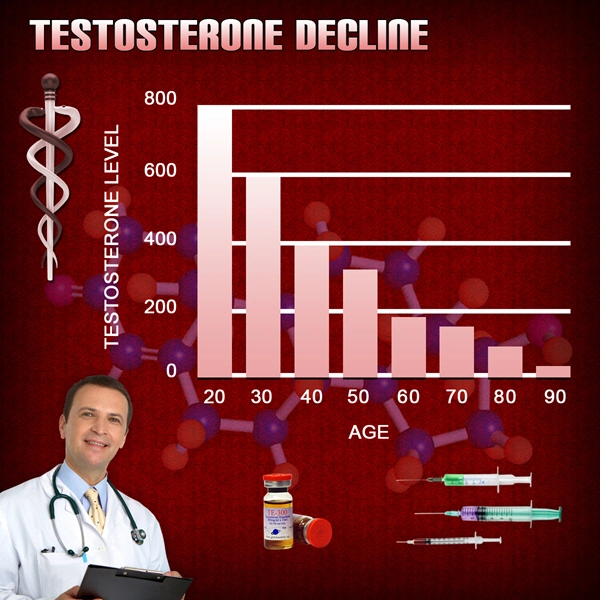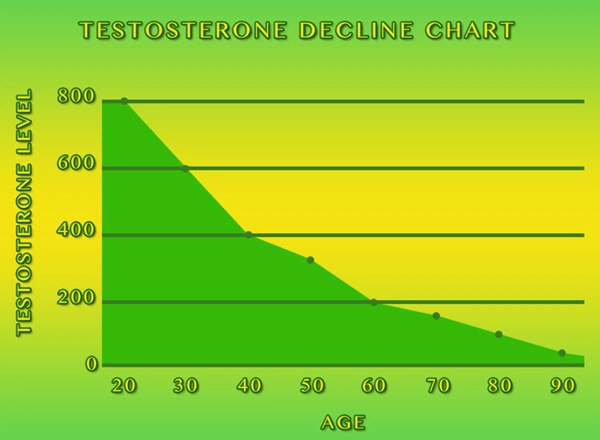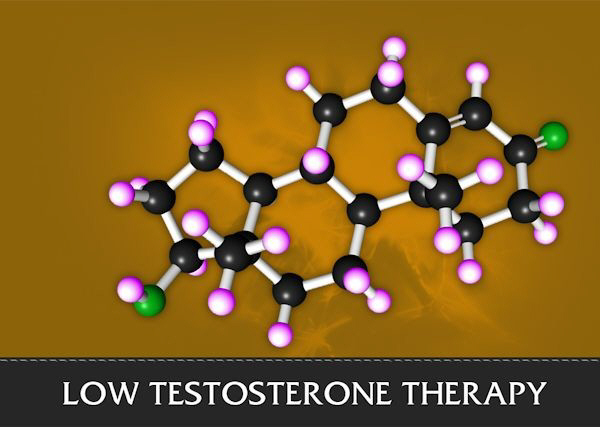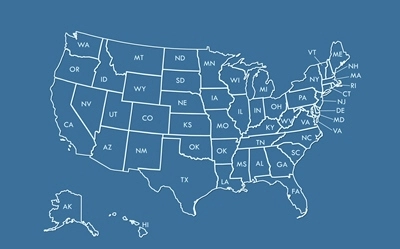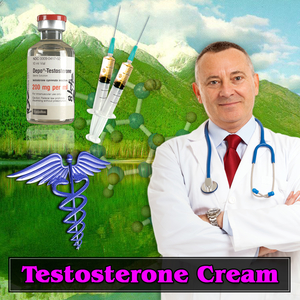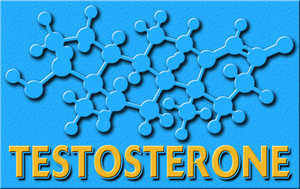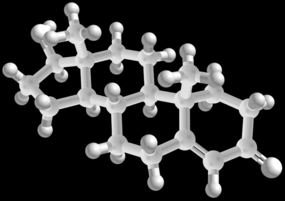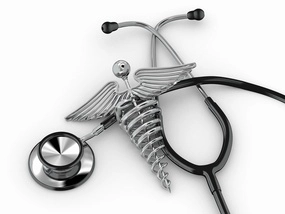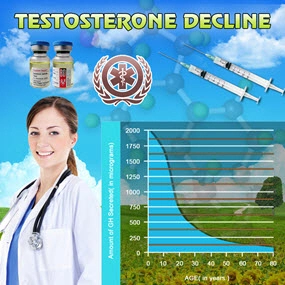Video Link: https://vimeo.com/293248712
Video Download: Click Here To Download Video
Video Stream: Click Here To Stream Video
Video Link: https://vimeo.com/293249096
Video Download: Click Here To Download Video
Video Stream: Click Here To Stream Video
 Testosterone, as most people know, is the primary male sex hormone, and is associated with many characteristics which are classically considered to be masculine, among these is a predilection toward aggression.
Testosterone, as most people know, is the primary male sex hormone, and is associated with many characteristics which are classically considered to be masculine, among these is a predilection toward aggression.
A recent study, led by Dr. Justin Carré of Nipissing University and published in the journal Biological Psychology, provides neurological evidence of the mechanism by which Testosterone exerts its influence upon aggression.
Other, earlier research discovered that Testosterone administration affects neurological function, but prior studies were performed on female patients. In those studies, women were provided a one-time dose of Testosterone to monitor the way that it impacted neurological expression.
The goal of Carré's study was to investigate how such Testosterone administration would affect male neurological expression, in comparison to its effects upon the female brain.
In particular, Carré wanted to examine how the male brain responds to threats when Testosterone Levels are artificially enhanced in healthy males.
Testosterone, Threat Perception, and the Human Brain
In particular, the researchers placed special emphasis on parts of the brain the are associated with aggression and threat response, such as the periaqueductal gray, the hypothalamus, and the amygdala.
This study involved sixteen patients, all-male, and with no signs of illness. They underwent two evaluations, in which they were either provided a placebo or a dose of Testosterone.
In order to limit the background noise caused by their natural Testosterone Production, all patients were given a medication that dropped their natural Testosterone Production. This also acted as a control mechanism, leading all sixteen patients to have very similar Testosterone Levels prior to experimentation.
The dose of Testosterone given to the participants was only enough to restore physiologically normal Testosterone Levels, in order to evaluate the effect of clinically normal Testosterone Levels upon fear and threat response.
After the participant received their dose of placebo or Testosterone, they entered an MRI machine and performed a face-matching test while their brains were monitored. In this test, the subjects were evaluated in regard to how they perceived a sense of threat in the faces they were presented with.
 Testosterone Increases Sensitivity to Perceived Threats
Testosterone Increases Sensitivity to Perceived Threats
When the MRI data was examined, the results showed that men that were given Testosterone responded to angry faces with heightened activity in all three areas most associated with threat perception—the periaqueductal grey, the hypothalamus, and the amygdala. Testosterone Suppression limited the ability of placebo patients to perceive threats.
This study represents the first research that definitively links normal Testosterone Levels to the brain's readiness to perceive aggression and threats.
Based on this framework, it will be possible to increase our knowledge of how Testosterone affects other aspects of aggression and the way that humans respond to threats, in particular, the way that Testosterone activates and impacts fight-or-flight mechanisms.
Understanding the Psychological Influence of Testosterone
Because Testosterone Therapy is experiencing a continuing surge of popularity, it has increased the importance of studying other aspects of how Testosterone impacts psychology and physiology.
Testosterone Injections, Pills, and Creams are commonly prescribed to men suffering from issues related to sexual dysfunction and age-related decline, so the more advanced that our knowledge of the hormone and its functions becomes, the more effectively we will be able to use Bio-Identical Testosterone Treatments in the safest and most effective ways possible.
Testosterone and Aggression Study Discussion
In the last ten years, new technology that allows patients to both view and respond to data in an MRI machine has led to great advancements in our scientific knowledge.
In this case, it allows researchers to evaluate how human beings respond to threats at a neurological level, and how Testosterone impacts that threat response.
This study provides distinct evidence that Testosterone leads to a significant increase in activity in the key parts of the brain that control aggression. Testosterone, like many other hormones, plays a role in the way that humans (and males of other species) respond to each other. Testosterone amplifies the brains reactivity to threatening facial expressions made by other males.
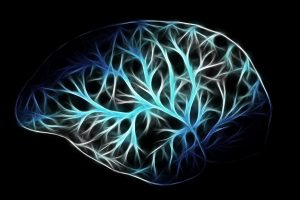 Testosterone and the Amygdala
Testosterone and the Amygdala
The particular area of the amygdala that responded most significantly is known as the centromedial region. The central nucleus of the amygdala is an important threat processing center which elevates physical and psychological response to aggression via its links to cholinergic neurons in the basal forebrain, brain stem, and hypothalamus.
Other researchers have hypothesized that Testosterone production increases activity in the medial amygdala, which directly leads to an increase in aggressive perception and response.
Animal research supports this notion. In studies involving cats, the artificial activation of the medial amygdala leads directly to an increase in highly aggressive behavior. Stimulation of this area leads directly to the stimulation of areas of the Periaqueductal Grey and the Hypothalamus associated with aggression.
Amygdala Sensitive to Sex Hormones
Both of these areas have receptors that respond to both estrogenic and androgenic hormones, meaning that the amygdala conceives of aggression, and the Periaqueductal Grey and the Hypothalamus respond to those signals in direct correlation with the activity of sex hormones in the brain.
This is the mechanism by which a person sees a threat, and is conditioned to respond to it. Most similar research with regard to this study has involved the effects of Testosterone on threat perception in women. Also, these earlier studies were more concerned with how Testosterone impacts threat perception four hours or more after Testosterone is administered.
This study, on the other hand, examined the effects of Testosterone (and lack of Testosterone) on threat perception after a shorter period of time, with participants being evaluated ninety minutes after they were provided Testosterone or placebo.
Whereas certain aspects of Testosterone do take four hours or more to become apparent, the effect upon the amygdala takes place more rapidly, in 45 minutes or less.
 How Could Different Testosterone Levels Impact Threat Perception?
How Could Different Testosterone Levels Impact Threat Perception?
The results of this study do provide some strong evidence with regard to how Testosterone impacts social interaction and aggression, but there is room for further clarification. For example, in this study, Testosterone Gel Treatment was only intended to boost Testosterone Levels to what is clinically considered to be the low end of the normal range.
In the previous studies which were conducted on female patients, Testosterone Levels were increased to a greater level. Based on what we know about Testosterone and the male brain, one could hypothesize that a higher dose of Testosterone would increase threat response to an even greater degree, and this would be an excellent future study.
Although this particular Testosterone study does differ from its predecessor in terms of Testosterone dosage, all of these studies show that Testosterone encourages activity in parts of the brain associated with threat assessment and fear.
It will be important to see how different levels of Testosterone impact threat response. It will add to the current body of knowledge and provide a more exact context for how Testosterone impacts psychological and physiological response as it is related to fear.
Testosterone Did Not Affect Neurological Response to Less Threatening Expressions
Testosterone appears to affect threat response only when the face perceived by the subject reflected anger and aggression. Testosterone did not cause spikes in activity in threat-associated brain regions when the subjects looked at pictures of scared or surprised individuals.
In this particular study, threat response was associated with an increase in activity in the area of the Hypothalamus associated with fear.
At this point, although it is clear that activity in these areas are associated with Testosterone and the presence of fearful stimuli, the research conducted does not provide any useful evidence regarding whether aggression-response is directly the result of these visual and neurological cues or if there is some other mediating factor that also plays a role.
This study clearly shows that increasing Testosterone Levels boosts neural activity in areas associated with threat response, but further research will have to be conducted in order to assess the level of aggression evoked by a threat stimulus mediated by elevated Testosterone Levels.
With this, it will be possible to compare the relative activity of these threat-associated areas of the brain with corresponding feelings of aggression by the participants. Future research could take many of the protocols used in this study in order to assess neurological responses to other stimuli that are affected by Testosterone Levels, including cooperation and risk-taking.
 Hormones and Psychology
Hormones and Psychology
Although we often like to think of our mind and our body as separate units, they actually function in synchronicity, and hormone balance plays an important role in maintaining physiological and psychological health. Here, we see how the presence or absence of Testosterone can significantly impact the way that our minds respond to aggressive stimuli.
Other research has shown how Testosterone is associated with a number of other factors, including libido, risk-taking, and financial success.
As the body of research continues to grow, we will learn more about the underlying processes that allow Testosterone to contribute to better health and the expression of masculinity. One thing is for certain. The world would be a completely different place without Testosterone!
Contact Us Today For A Free Consultation

- Adverse Effects of Testosterone Therapy in Adult Men: A Systematic Review and Meta-Analysis [Last Updated On: July 2nd, 2024] [Originally Added On: June 4th, 2010]
- Low Testosterone Levels, Foods That Increase Testosterone Levels wwwSelf-Improvement-Bible.com [Last Updated On: November 12th, 2023] [Originally Added On: May 30th, 2011]
- Low Testosterone in Men: The Next Big Thing in Medicine! - Abraham Morgentaler, MD [Last Updated On: May 7th, 2023] [Originally Added On: June 3rd, 2011]
- How To Determine Testosterone Levels By Looking At Your Ring Finger [Last Updated On: December 7th, 2017] [Originally Added On: June 30th, 2011]
- Prolab Horny Goat Weed Testosterone Booster Supplement Review [Last Updated On: November 23rd, 2023] [Originally Added On: July 19th, 2011]
- The Healthy Skeptic: Products make testosterone claims [Last Updated On: August 13th, 2024] [Originally Added On: September 11th, 2011]
- How To Naturally Increase Testosterone [Last Updated On: November 21st, 2023] [Originally Added On: September 28th, 2011]
- Testosterone Production - Video [Last Updated On: November 25th, 2024] [Originally Added On: November 20th, 2011]
- Testosterone makes us less cooperative and more egocentric, study finds [Last Updated On: January 23rd, 2018] [Originally Added On: February 1st, 2012]
- Testosterone makes us less cooperative and more egocentric [Last Updated On: January 24th, 2018] [Originally Added On: February 1st, 2012]
- Too much testosterone makes for bad decisions, tests show [Last Updated On: April 30th, 2025] [Originally Added On: February 1st, 2012]
- Today in Research: Testosterone's Negative Effects; Diet Soda Death [Last Updated On: January 2nd, 2018] [Originally Added On: February 2nd, 2012]
- Testosterone drives ego, trips cooperation [Last Updated On: December 2nd, 2017] [Originally Added On: February 4th, 2012]
- FDA approves BioSante/Teva's testosterone gel [Last Updated On: April 28th, 2025] [Originally Added On: February 15th, 2012]
- 'Manly' Fingers Make For Strong Jawline in Young Boys [Last Updated On: December 1st, 2017] [Originally Added On: February 15th, 2012]
- Teva, BioSante Win U.S. Approval for Testosterone Therapy [Last Updated On: December 10th, 2017] [Originally Added On: February 15th, 2012]
- BioSante Gains on Approval of Testosterone Gel: Chicago Mover [Last Updated On: January 8th, 2018] [Originally Added On: February 16th, 2012]
- BioSante soars following drug approval from FDA [Last Updated On: December 26th, 2017] [Originally Added On: February 16th, 2012]
- Antibodies, Not Hard Bodies: The Real Reason Women Drool Over Brad Pitt [Last Updated On: December 24th, 2017] [Originally Added On: February 21st, 2012]
- Almark Publishing Releases Book From Mark Rosenberg, M.D. Revealing Natural Discoveries Associated With Low ... [Last Updated On: May 3rd, 2025] [Originally Added On: February 28th, 2012]
- Testosterone Replacement Clinic Comes to Kansas City with Potential to Help Thousands of Men [Last Updated On: May 2nd, 2025] [Originally Added On: March 1st, 2012]
- Study examines the relative roles of testosterone and its metabolite, dihydrotestosterone in men [Last Updated On: December 2nd, 2017] [Originally Added On: March 7th, 2012]
- The Role of 5{alpha}-Reductase Inhibition in Men Receiving Testosterone Replacement Therapy [Editorial] [Last Updated On: December 21st, 2017] [Originally Added On: March 7th, 2012]
- Effect of Testosterone Supplementation With and Without a Dual 5{alpha}-Reductase Inhibitor on Fat-Free Mass in Men ... [Last Updated On: January 3rd, 2018] [Originally Added On: March 7th, 2012]
- Why We Like Men Who Can Keep Their Cool [Last Updated On: December 30th, 2017] [Originally Added On: March 7th, 2012]
- Testosterone And Heart Health [Last Updated On: May 1st, 2025] [Originally Added On: March 10th, 2012]
- Your Life on Testosterone: Overly Sure of Yourself, Unwilling to Listen [Last Updated On: November 25th, 2018] [Originally Added On: March 15th, 2012]
- Mayo Clinic-TGen study role testosterone may play in triple negative breast cancer [Last Updated On: December 8th, 2017] [Originally Added On: March 23rd, 2012]
- A dose of testosterone might not cure what ails you [Last Updated On: January 23rd, 2018] [Originally Added On: March 25th, 2012]
- Green tea could aid athletes hide testosterone doping [Last Updated On: December 16th, 2017] [Originally Added On: March 25th, 2012]
- TGen Study Role Testosterone May Play in Triple Negative Breast Cancer [Last Updated On: December 6th, 2017] [Originally Added On: March 26th, 2012]
- Testosterone low, but responsive to competition, in Amazonian tribe [Last Updated On: January 23rd, 2018] [Originally Added On: March 28th, 2012]
- Competition-linked bursts of testosterone are fundamental aspect of human biology, study of Amazonian tribe suggests [Last Updated On: December 25th, 2017] [Originally Added On: March 28th, 2012]
- Playing football boosts testosterone levels by 30 percent! [Last Updated On: February 4th, 2024] [Originally Added On: March 28th, 2012]
- Testosterone low, but responsive to competition, in Amazonian tribe -- with slideshow [Last Updated On: December 9th, 2017] [Originally Added On: March 28th, 2012]
- The benefits of testosterone pellet therapy [Last Updated On: January 24th, 2018] [Originally Added On: March 29th, 2012]
- Low testosterone levels cause health woes [Last Updated On: November 25th, 2018] [Originally Added On: March 30th, 2012]
- Heart Failure Patients Getting Relief from Testosterone Supplements [Last Updated On: May 5th, 2025] [Originally Added On: April 21st, 2012]
- Study Finds Fatherhood Suppresses Testosterone [Last Updated On: May 4th, 2025] [Originally Added On: May 3rd, 2012]
- Low testosterone levels could raise diabetes risk for men [Last Updated On: January 26th, 2018] [Originally Added On: May 5th, 2012]
- Why low testosterone may increase your risk of diabetes [Last Updated On: November 25th, 2024] [Originally Added On: May 5th, 2012]
- Diabetes link to low testosterone [Last Updated On: November 25th, 2024] [Originally Added On: May 5th, 2012]
- Testosterone Linked to Weight Loss in Obese Men [Last Updated On: January 2nd, 2018] [Originally Added On: May 11th, 2012]
- Testosterone may help weight loss [Last Updated On: November 25th, 2024] [Originally Added On: May 11th, 2012]
- Testosterone-fuelled infantile males might be a product of Mom's behaviour [Last Updated On: December 25th, 2017] [Originally Added On: May 11th, 2012]
- Testosterone-fueled infantile males might be a product of Mom's behavior [Last Updated On: January 6th, 2018] [Originally Added On: May 11th, 2012]
- Testosterone supplements may help obese men lose weight [Last Updated On: January 5th, 2018] [Originally Added On: May 11th, 2012]
- Testosterone supplements 'can help men lose their middle-aged spread' [Last Updated On: November 25th, 2024] [Originally Added On: May 12th, 2012]
- Some doctors question safety of testosterone replacement therapy [Last Updated On: January 20th, 2018] [Originally Added On: May 15th, 2012]
- Health Canada Approves New Testosterone Topical Solution for Men [Last Updated On: May 15th, 2025] [Originally Added On: May 15th, 2012]
- Environment trumps genes in testosterone levels, study finds [Last Updated On: May 8th, 2025] [Originally Added On: May 15th, 2012]
- Global Testosterone Replacement Therapy (TRT) Industry [Last Updated On: May 7th, 2025] [Originally Added On: May 21st, 2012]
- Testosterone Fuels Boom, Swindler Sows Panic: Top Business Books [Last Updated On: January 13th, 2018] [Originally Added On: June 2nd, 2012]
- Increase in testosterone drug use [Last Updated On: April 12th, 2018] [Originally Added On: June 4th, 2012]
- Testosterone Promotes Agression Automatically [Last Updated On: January 29th, 2018] [Originally Added On: June 9th, 2012]
- Testosterone shown to help sexually frustrated women [Last Updated On: January 27th, 2018] [Originally Added On: June 9th, 2012]
- Research and Markets: Testosterone Replacement Therapy (TRT) - Global Strategic Business Report [Last Updated On: December 23rd, 2017] [Originally Added On: June 12th, 2012]
- Proposed testosterone testing of some female olympians challenged by Stanford scientists [Last Updated On: January 30th, 2018] [Originally Added On: June 14th, 2012]
- Testosterone Makes Bosses Into Jerks, Says Paul Zak [Last Updated On: January 8th, 2018] [Originally Added On: June 14th, 2012]
- Testosterone Therapy: A Misguided Approach to Erectile Dysfunction (ED) [Last Updated On: May 10th, 2025] [Originally Added On: June 20th, 2012]
- New drugs, new ways to target androgens in prostate cancer therapy [Last Updated On: January 8th, 2018] [Originally Added On: June 20th, 2012]
- Long-term testosterone treatment for men results in reduced weight and waist size [Last Updated On: January 19th, 2018] [Originally Added On: June 23rd, 2012]
- Declining testosterone levels in men not part of normal aging, study finds [Last Updated On: December 27th, 2017] [Originally Added On: June 23rd, 2012]
- Low testosterone not normal part of aging [Last Updated On: December 22nd, 2017] [Originally Added On: June 25th, 2012]
- Testosterone Does Not Necessarily Wane With Age [Last Updated On: December 6th, 2017] [Originally Added On: June 25th, 2012]
- Overweight men can boost low testosterone levels by losing weight [Last Updated On: December 10th, 2017] [Originally Added On: June 25th, 2012]
- Testosterone-replacement therapy improves symptoms of metabolic syndrome [Last Updated On: January 14th, 2018] [Originally Added On: June 26th, 2012]
- Testosterone therapy takes off pounds [Last Updated On: December 11th, 2017] [Originally Added On: June 26th, 2012]
- Weight loss may boost men's testosterone [Last Updated On: May 9th, 2025] [Originally Added On: June 27th, 2012]
- Low Testosterone? Study finds age may not be to blame [Last Updated On: May 12th, 2025] [Originally Added On: July 1st, 2012]
- Do you have low testosterone? [Last Updated On: December 15th, 2017] [Originally Added On: July 8th, 2012]
- Wall Streeters Buying Testosterone for an Edge [Last Updated On: May 11th, 2025] [Originally Added On: July 12th, 2012]
- Beefy Wall Street Traders rub on testosterone [Last Updated On: February 20th, 2024] [Originally Added On: July 12th, 2012]
- Tale of two runners exposes flawed Olympic thinking [Last Updated On: December 23rd, 2024] [Originally Added On: July 19th, 2012]
- Genetic markers for testosterone and estrogen level regulation identified [Last Updated On: January 6th, 2018] [Originally Added On: July 20th, 2012]
- BUSM researchers identify genetic markers for testosterone, estrogen level regulation [Last Updated On: December 18th, 2017] [Originally Added On: July 20th, 2012]
- DRS. OZ AND ROIZEN: How to reap the benefits of normal testosterone levels [Last Updated On: December 23rd, 2024] [Originally Added On: July 21st, 2012]
- How Testosterone Drives History [Last Updated On: December 24th, 2024] [Originally Added On: July 22nd, 2012]
- Testosterone replacement is "fountain of youth" for men [Last Updated On: January 3rd, 2018] [Originally Added On: July 27th, 2012]
- Pill for low testosterone in men heads for phase II clinical trials [Last Updated On: December 31st, 2017] [Originally Added On: August 2nd, 2012]
Word Count: 1528

